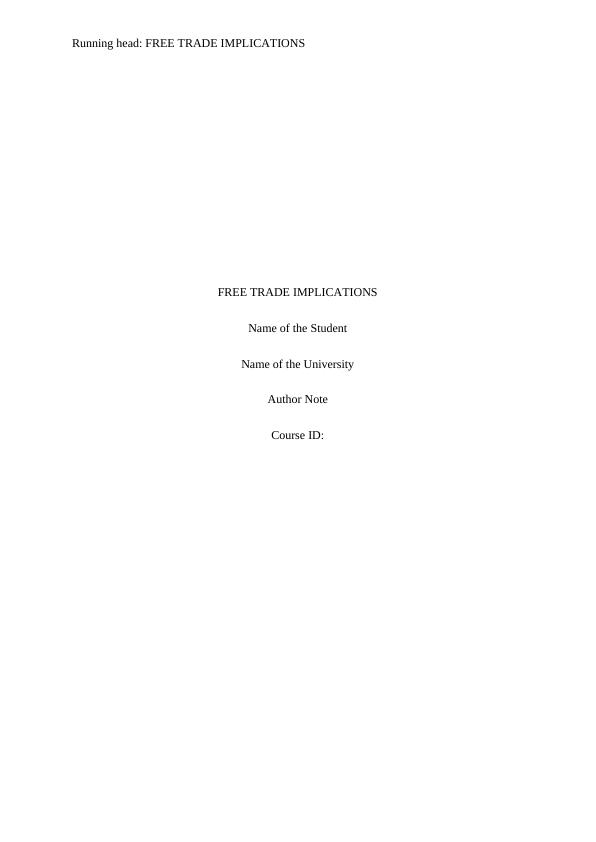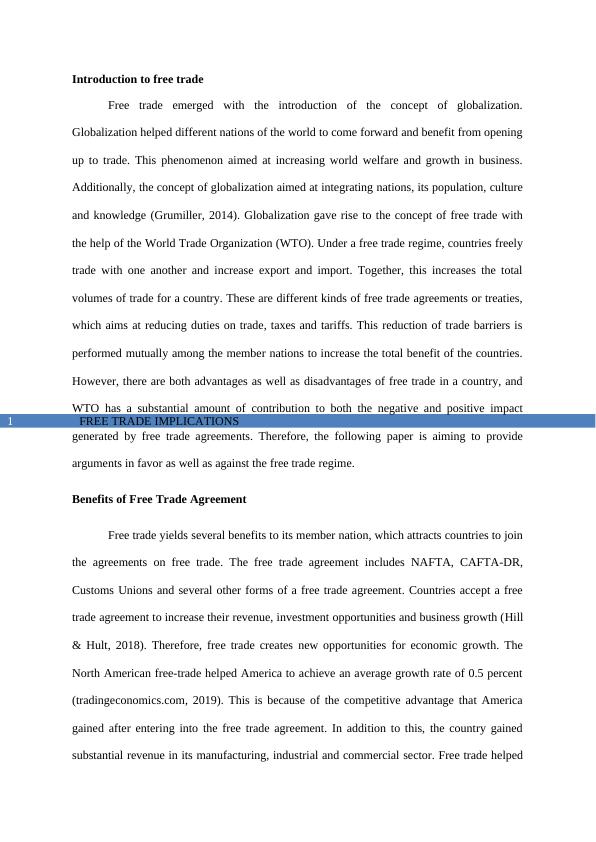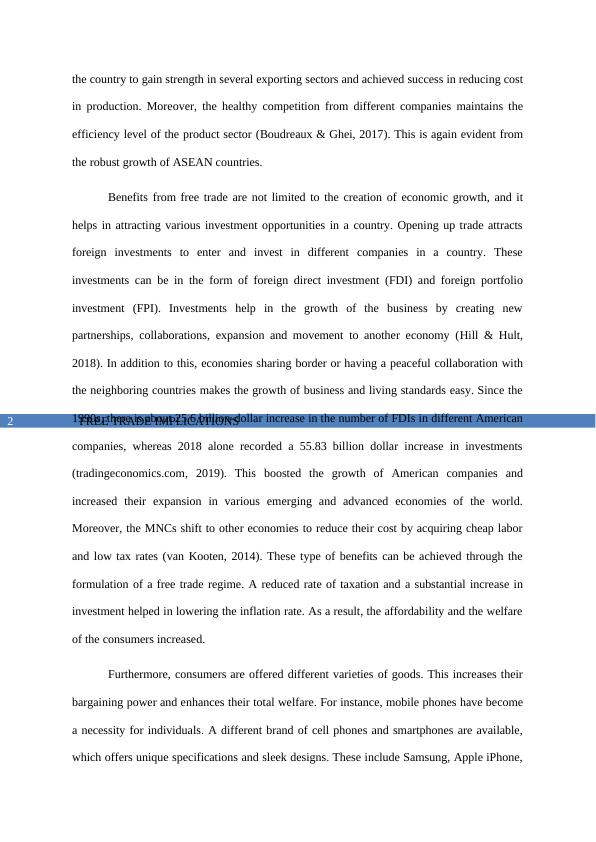Free Trade Implications: Benefits and Pitfalls
Write a five-page essay discussing the benefits and pitfalls of a free trade regime, citing the course textbook, a peer-reviewed journal article, a Barron's article, and a Financial Times video.
7 Pages1807 Words441 Views
Added on 2022-08-09
About This Document
This article discusses the benefits and pitfalls of free trade agreements. It covers the advantages of free trade, such as economic growth, investment opportunities, and consumer welfare, as well as the disadvantages, such as trade imbalances, environmental degradation, and debt burden. The article also highlights the role of the World Trade Organization in shaping the impact of free trade agreements.
Free Trade Implications: Benefits and Pitfalls
Write a five-page essay discussing the benefits and pitfalls of a free trade regime, citing the course textbook, a peer-reviewed journal article, a Barron's article, and a Financial Times video.
Added on 2022-08-09
ShareRelated Documents
End of preview
Want to access all the pages? Upload your documents or become a member.
THE ECONOMICS ASSIGNMENT
|12
|3453
|23
Political Economy in Trade & Investment
|5
|1077
|26
WTO Negotiations with Serbia and Kazakhstan: Reasons for Delay in Membership
|13
|3180
|379
Assignment About The International Economics.
|4
|818
|19
Contemporary Business Environment : Assignment
|13
|2989
|192
Understanding the World Trade Organisation (WTO) in International Business
|12
|3827
|52



